How to shop on the Ketogenic diet the right way might not be as simple as it seems. After reading about the ketogenic diet’s incredible results, you decide to start it with great enthusiasm.
But soon you run into the first great difficulty: You go to the supermarket, and you don’t know what to buy.
In most aisles, you find processed products that attract a lot of attention.
You don’t know what fats are good.
Doubts whether you should drink milk.
You don’t know which fruits go into the keto diet.
And you despair.
In the end, without knowing it, you end up buying products that will get you out of the ketosis you want so much to get to.
This happens because the ketogenic diet is not only a protocol to re-educate the body to learn how to burn fat. It is an eating method to cut down on processed products and start eating real food.
So you never have this problem again, here is the ultimate guide on how to shop on the ketogenic diet.
Top tips on how to shop on the ketogenic diet
Processed Foods
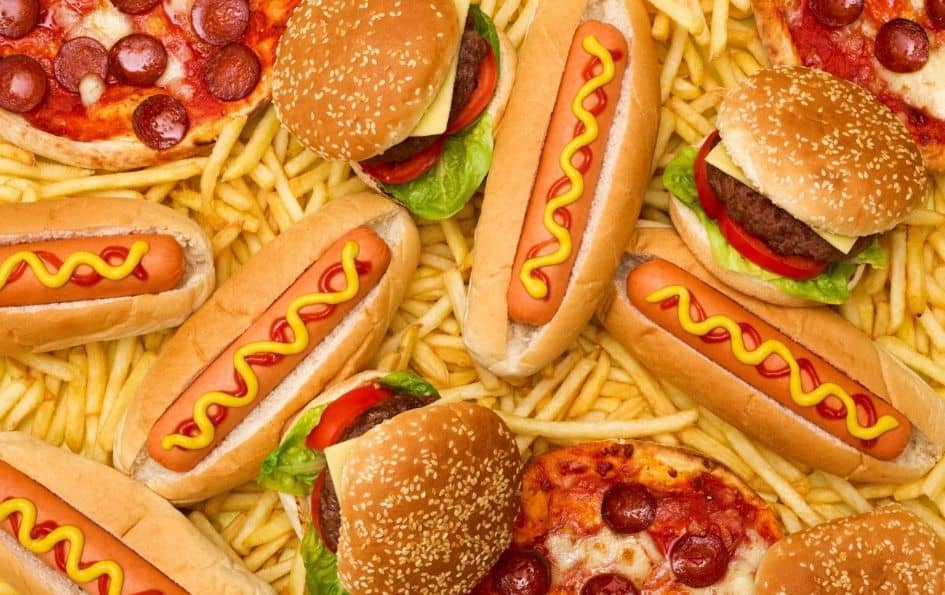
One of the main reasons people eat more than they need or skip their usual diet is processed products.
What are processed foods?
Those edible products designed by the food industry that make your brain, when you see them, cannot let them pass, want to consume them and once ingested:
- They activate a set of brain areas (known as rewards and hedonism hub in the human brain) that confuse your brain.
- They make you unable to perceive satiety and, therefore, consume more than you need.
As we’ve said before, remember that processed products will get you out of ketosis quickly and away from your goal.
You should know that while the ketogenic diet will bring you many benefits, it is an on / off diet.
That is, either you go into ketosis and get all the benefits, or you eat minimal carbohydrates, but you’re not in ketosis, and although you may lose weight, you will find yourself sad and low on energy.
👉 This is why in order to succeed with the keto diet is to empty the cupboard of processed foods.
The challenge is to empty it and not to refill it, so you mustn’t buy these types of products because even if you feel healthy, your brain knows they are there and will take the opportunity to ask for them when you least expect it.
Therefore, if you want to know how to shop on the ketogenic diet, this is your first rule of thumb:
“If the cookies are not in your pantry, they will not enter your mouth.”
Supermarkets
Do not be fooled, the main objective of a supermarket (despite all the advertising you see like ”we take care of you, we look after you”) is not that you are healthy, it is that you buy everything possible.
For this, supermarkets use these two persuasion strategies (among many others):
- Healthy food is at the entrance. The answer is quite logical. Research has shown that willpower is like a weaker muscle the more we use it—fatigued by over-making.
- That’s why, as you go through the aisles of the supermarket, resisting temptation and controlling your emotions becomes more and more difficult.
- The result is that we are more prone to making poor decisions. Let’s say that if you already bought a kilo of cucumbers, fish, and lettuce, your unconscious is satisfied and relaxed.
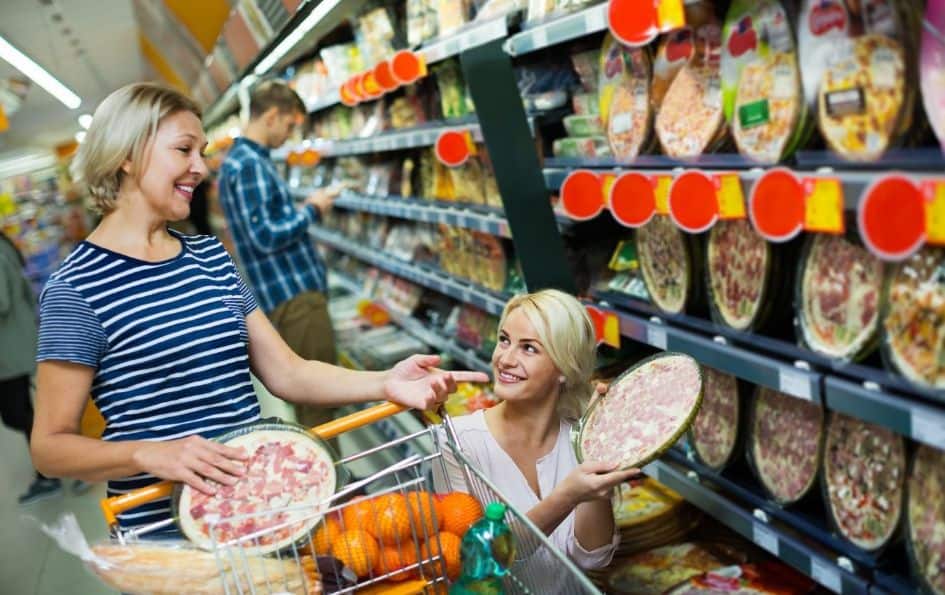
In this way, it becomes inevitable to buy a frozen pizza, ice cream, or a box of cookies just a few meters later.
The processed products are on the right:
- After studying thousands of recordings in supermarkets, these identified the majority’s tendency to turn in the aisles to the right.
- As a result, supermarkets fill the right surface with irresistible offers or products.
- Like machines, we buy them without thinking, as if it were an unconscious reflection that is maximized even more when the cart is empty.
- This is why it is common to find the day’s offers or products in liquidation at the entrance.
Therefore, before entering the supermarket, you must know precisely what you want to buy and stick to it.
An excellent initial strategy to neutralize all the supermarkets’ marketing strategies is to carry out the route in the reverse order of what is indicated (something we would also do at Ikea if they let us.).
And now we are going to see what you came to buy, but I want to remind you that everything I am going to mention to you now is included in the free keto diet ebook here.
How to shop on the ketogenic diet?
How to buy vegetables on the ketogenic diet?
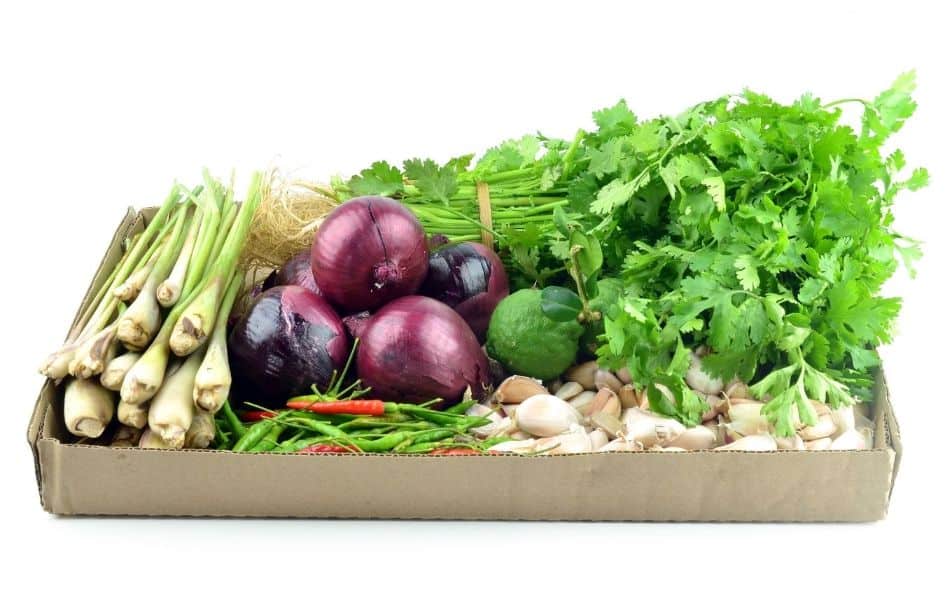
The most crucial aspect in deciding the type of fruits and vegetables on the ketogenic diet is, of course, the amount of carbohydrates.
👉 Due to the carbohydrate content, the most exciting vegetables are:
Lettuce: Boston, endives, green leaf, iceberg, matcha, romaine, and watercress.
Leafy greens: collard greens, kale, spinach, Swiss chard, and turnip.
Cabbages: cabbage, brussels sprouts, broccoli, cauliflower, kale.
Other vegetables such as asparagus, avocado, eggplant, kohlrabi, mushrooms, radishes, zucchini, bell pepper, tomato, and pumpkin.
You must bear in mind that kale, pumpkin, and tomato usually exceed 5 grams of carbohydrates per 100 grams, so if you consume them in high amounts, they end up adding a lot to the total count.
As for vegetables, we recommend that at least at the beginning, you avoid tubers (potato, sweet potato, and even carrot) because their carbohydrate content is higher.
Another aspect that you have to consider is that fruits are sweet and delicious, and the body loves them. For many people, it isn’t easy to eat just enough fruit to stay in ketosis. In this way, they have a much greater craving for sweets than if they did not consume it.
👉 It is best to reduce a lot of the fruits on your shopping list.
If you want to know more, here you can find our guide to fruits on the ketogenic diet.
How to buy meat and fish on the ketogenic diet
In this group, we have fewer limitations in carbohydrates as they contain tiny amounts. We will be guided by the raw material’s quality, personal preferences, and the need for variation.
The meat. Variety, cuts, and quality.
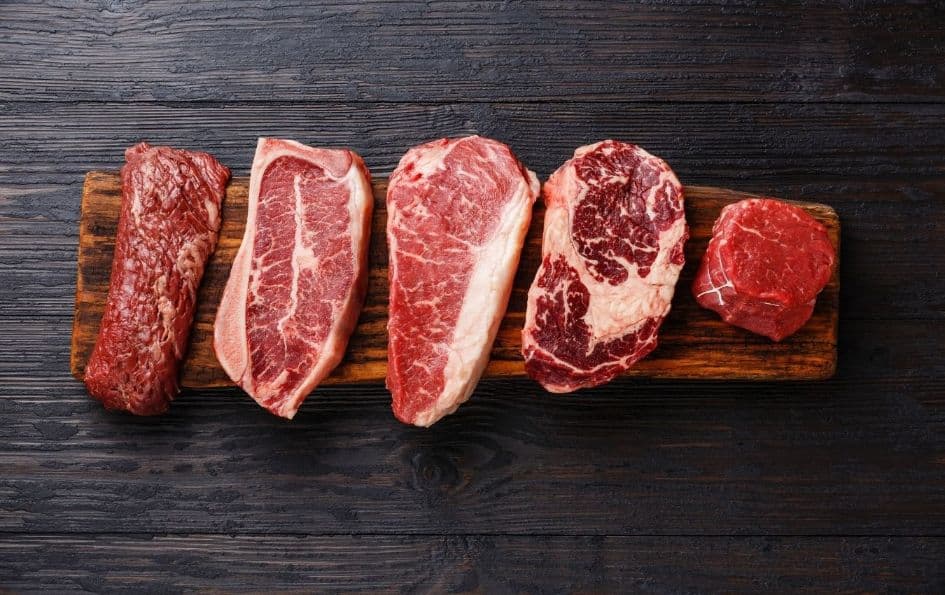
When we think of meat, we usually include all the animals and all the cuts in the same bag, but by no means all of them provide us with the same nutrients.
👉 Vary in cuts and consume different parts of the animal to ensure that you obtain all the necessary nutrients.
👉Varying between beef, chicken, lamb, rabbit, horse, and pork will give you digestive rest and greater nutritional density.
👉 The origin of the meat is even more important than that of the vegetables. An animal housed and fed with feed will not contribute the same as an animal raised in the freedom that has grazed a large part of its life.
Whenever possible, consume grass meat. It has a higher nutritional density and a much more exciting fatty acid content.
👉 Regarding cuts and varieties, we recommend:
- Vary between sirloin, filet, entrecote, and entrails.
- Eat viscera once or twice a week: liver, kidneys, corns, or gizzards, as they are the most nutritious parts of the animal.
- Lastly, make bone broth, nature’s true multi-mineral.
- Fish and other seafood
- This group is best if the fish is wild and varies between bluefish, white fish, shellfish, and mollusks.
Another aspect to consider when buying fish is heavy metal content. You should know that the smaller species contain a much less amount of fish than the larger ones.
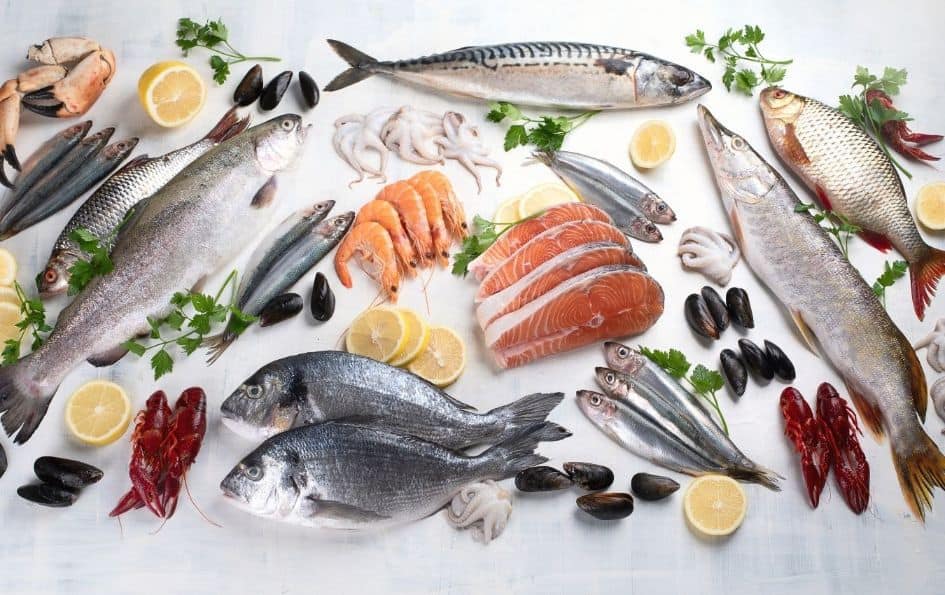
👉 According to the official guides, these are the most recommended fish due to their low mercury content:
- Pollock, Anchovy
- Herring, Cod, Blue Whiting, Cockle, Mackerel, Squid, Shrimp, Crab, Chickadee
- Stoker, Carp, Squid, Chirla
- Clam, Cuttlefish
- Cuttlefish, Norway lobster, Coquina, Dorada, Espadin, Prawn, Horse mackerel, Lobster, Prawn, European sole, Limanda
- Lenguadina, Seabass, Mussel, Merlan, Hake
- Whiting, Razor, Oyster, Pomfret, Flounder, Squid, Octopus, Quisquilla, Atlantic salmon, Pacific salmon, Sardine, Sardinella, Sardinopa, Plaice, and Trout.
Dairy on the ketogenic diet
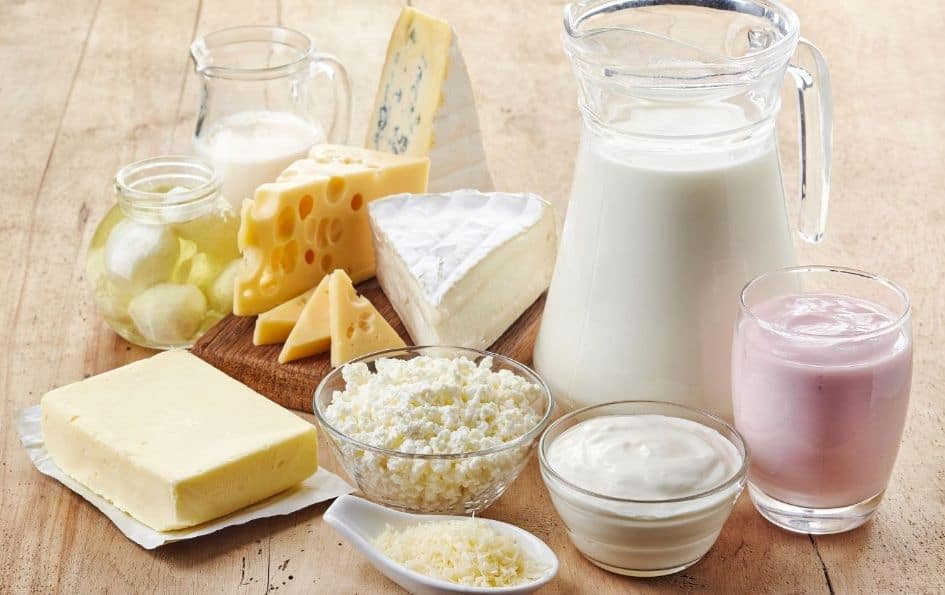
Dairy is a very paradoxical food group. On the one hand, their nutritional density is high, and they provide us with quality protein and fat.
On the other hand, humans have not consumed dairy in adulthood for most of human history, and today we are not 100% prepared to do so.
70% of adults on the planet are intolerant to lactose, and one of its main proteins, casein, has a more than proven inflammatory potential.
My suggestion is that you should appreciate how dairy feels to you. If you have digestive discomfort, diarrhea, or constipation when consuming them, it is best to avoid them altogether.
In case your feelings are good when consuming it, dairy products with a lower amount of carbohydrates are cheeses so that you can include some in your shopping list.
👉 Butter or ghee is a different case from the rest of dairy products since their content is fat, and therefore, they do not generate the problems mentioned above. You can always include them on your shopping list.
Eggs on the ketogenic diet
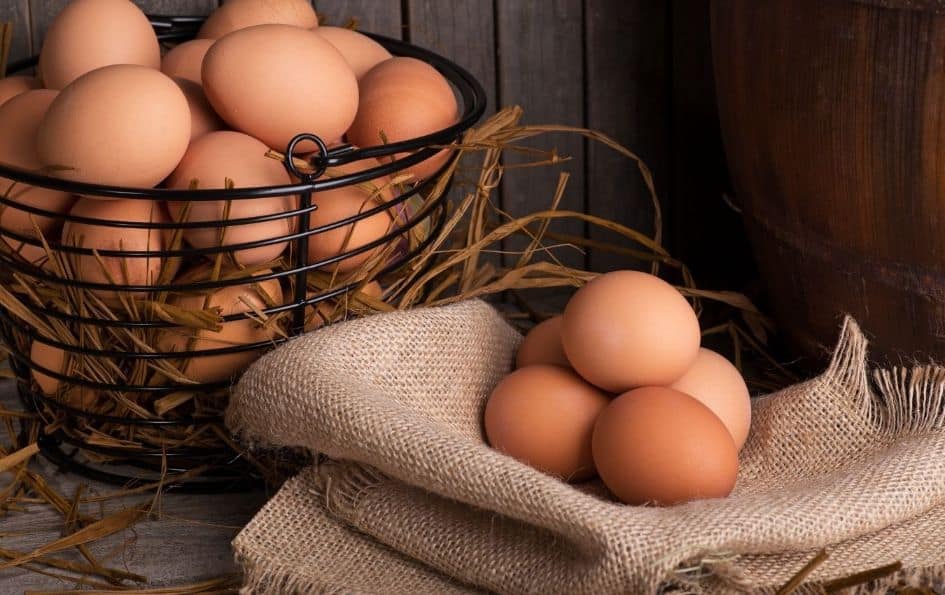
Eggs are an excellent food for the ketogenic diet. They have good nutritional density, highly bioavailable protein, and essential nutrients such as choline or specific vitamins.
Unlike meat or vegetables, organic eggs (even though they are a bit more expensive) are quite affordable. So, whenever possible, choose quality eggs.
👉 To know the origin of the egg, you must look at its numbering. If they start at 0, they are organic eggs.
Good fats on the ketogenic diet
Fat is a staple food on the ketogenic diet. In addition to carbohydrate restriction, adequate fat consumption creates an optimal context to inform our cells that it is an excellent time to use fat as an energy substrate.
Where to find sources of quality fats?
Olive oil, coconut oil, butter, ghee, cocoa butter, avocado, nut creams, or dried fruits will be your greatest allies.
Other foods you can add to the keto diet
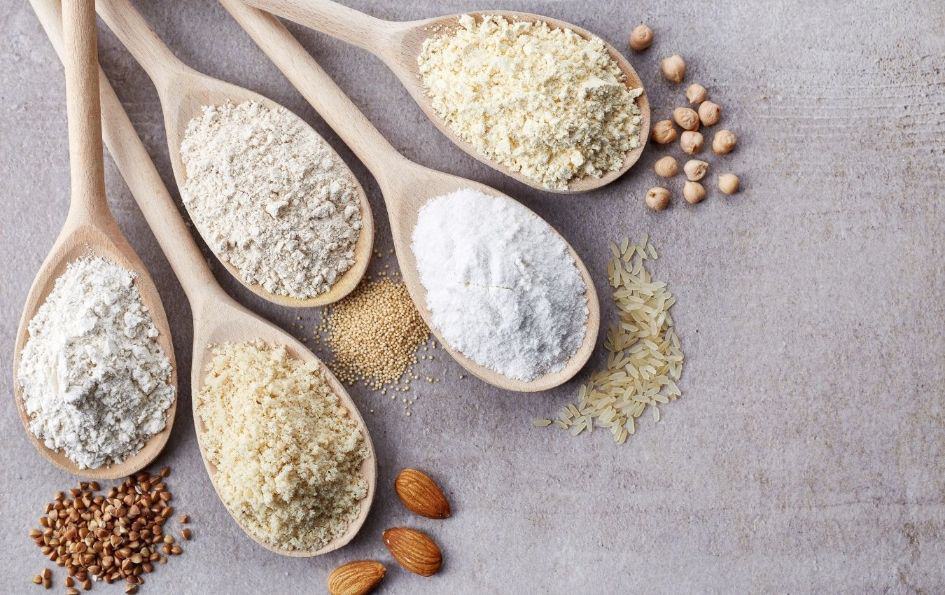
As you have seen initially, the ketogenic diet is based on foods (not processed products) and on not very easy, little elaborate, and delicious recipes.
Even so, you may want other more common meals for you, so you can add specific products that break the monotony and allow you to make recipes that give a different point to some foods.
👉 Flours: coconut, almond, or konjac flours are the most used to make cakes, crepes, or keto bread.
👉 Chocolates: Take a good look at the label and nutritional information. Buy chocolates with more than 70% cocoa and no more than 10 g of sugar per 100 grams.
👉 Nuts: Almonds, walnuts, hazelnuts, and macadamia nuts are the nuts with the lowest percentage of carbohydrates, so that you can prioritize these among your sources of fat.
Can you think of something else that you don’t know if you can include on your shopping list? Leave it in the comments, and we will help you!
I hope the article helped you and that you now have a lot more ideas on how to shop on the ketogenic diet and not get lost on the road to ketosis (or the supermarket aisles).
And don’t forget to get your free ketogenic diet course. It’s the best guide you’ll find to get into ketosis without having to suffer, or go hungry, or be disoriented in the market. It will help you lose weight & reboot your metabolism.
As a veteran fitness technology innovator and the founder of GearUpToFit.com, Alex Papaioannou stands at the intersection of health science and artificial intelligence. With over a decade of specialized experience in digital wellness solutions, he’s transforming how people approach their fitness journey through data-driven methodologies.
